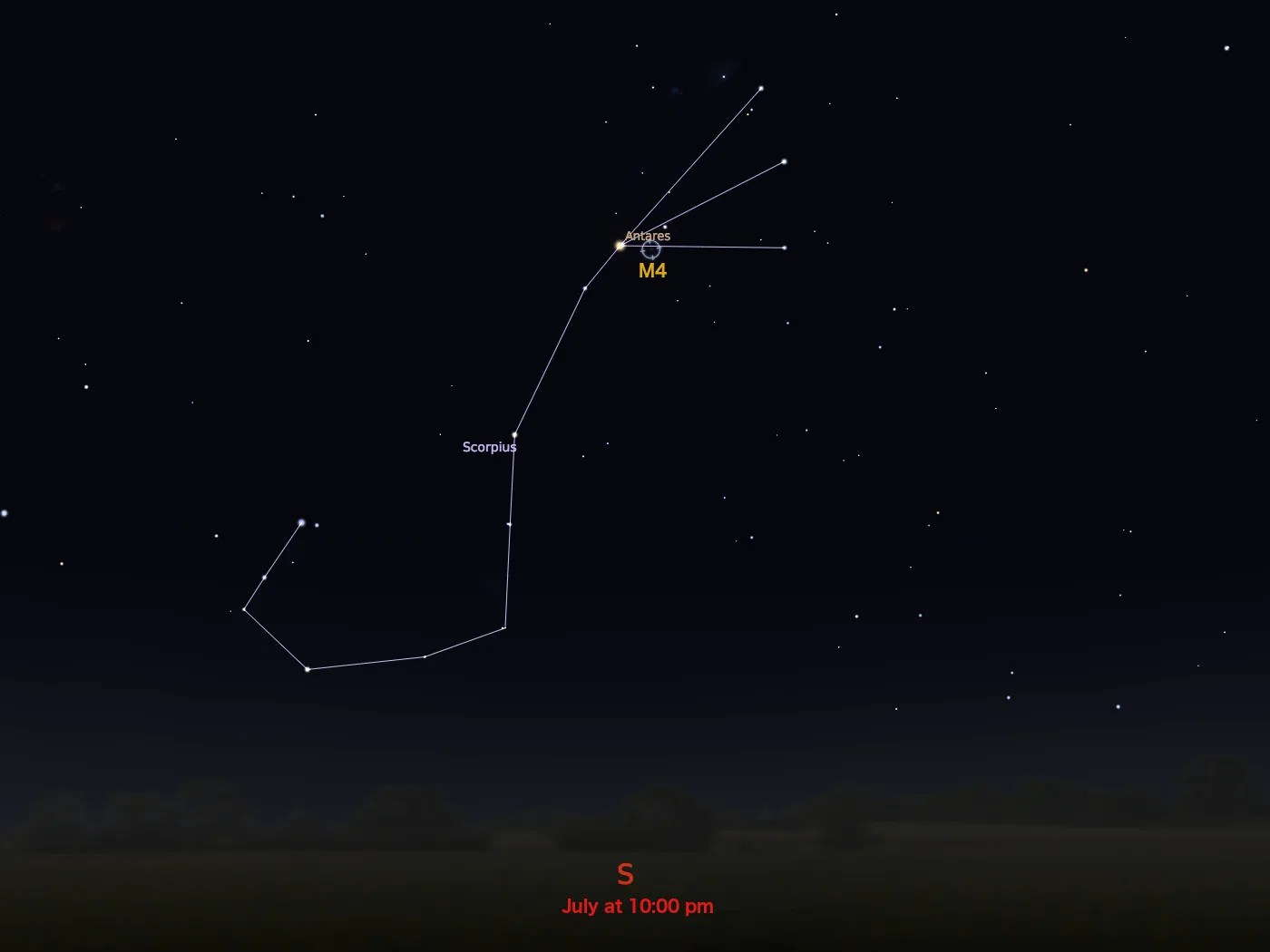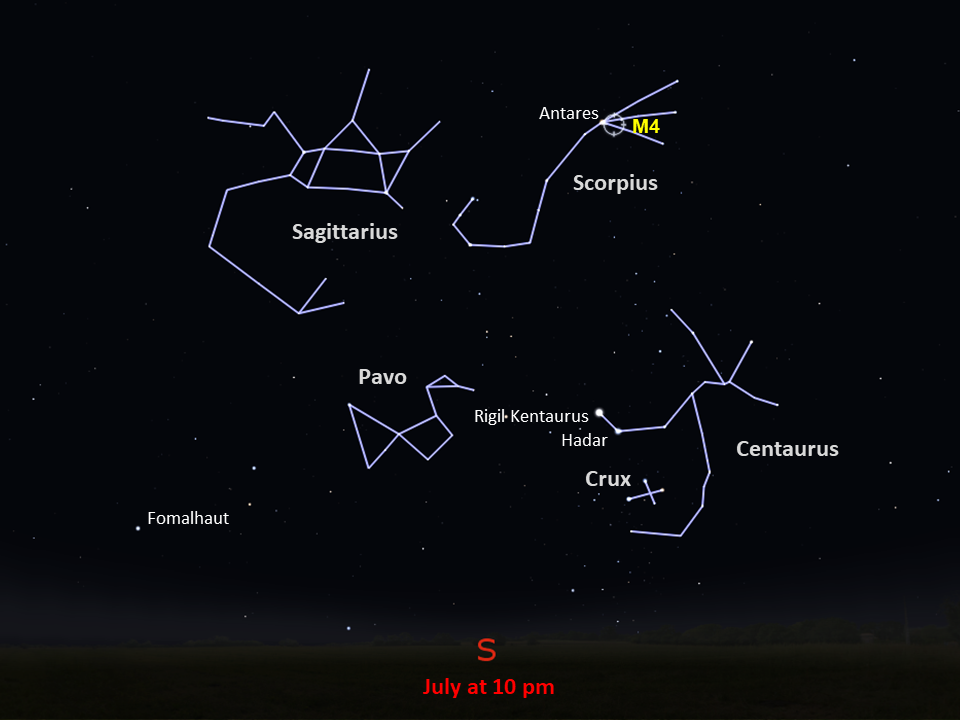Messier 4
Use the bright star Antares to help you find Messier 4.
Distance
5,500 light-years
Apparent Magnitude
5.9
constellation
Scorpius
object type
Globular Cluster
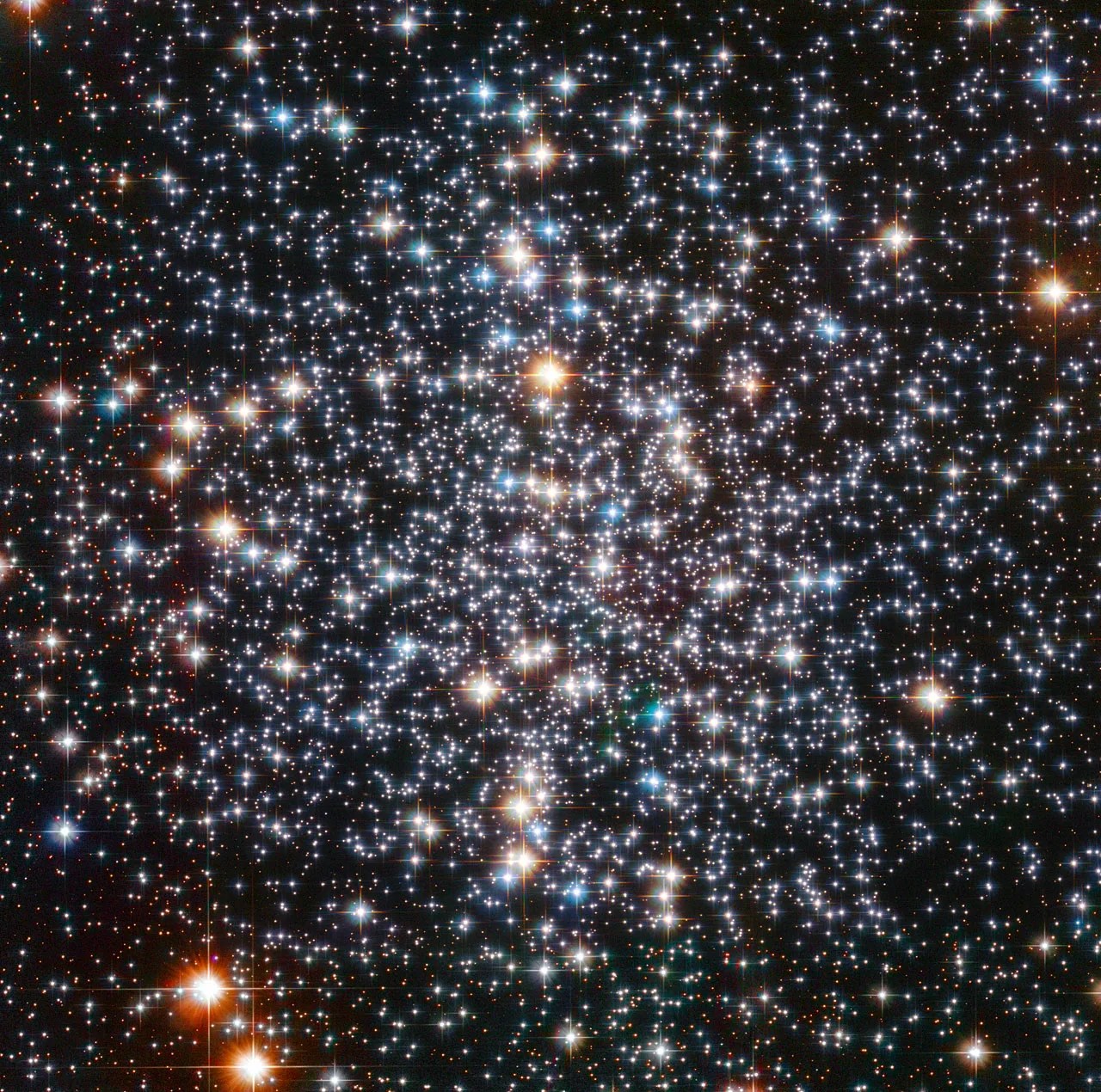
Messier 4, located in the constellation Scorpius, is a huge, spherical collection of stars known as a globular cluster. At just 5,500 light-years away, it is the closest globular cluster to Earth, making it a prime object for study. Because of its apparent magnitude of 5.9 and proximity to the orange-red star Antares, one of the brightest stars in the night sky, M4 is relatively easy to find with a small telescope. However, it won’t look anything like Hubble’s detailed image and will appear as a fuzzy ball of light in your eyepiece. The cluster is best spotted in July.
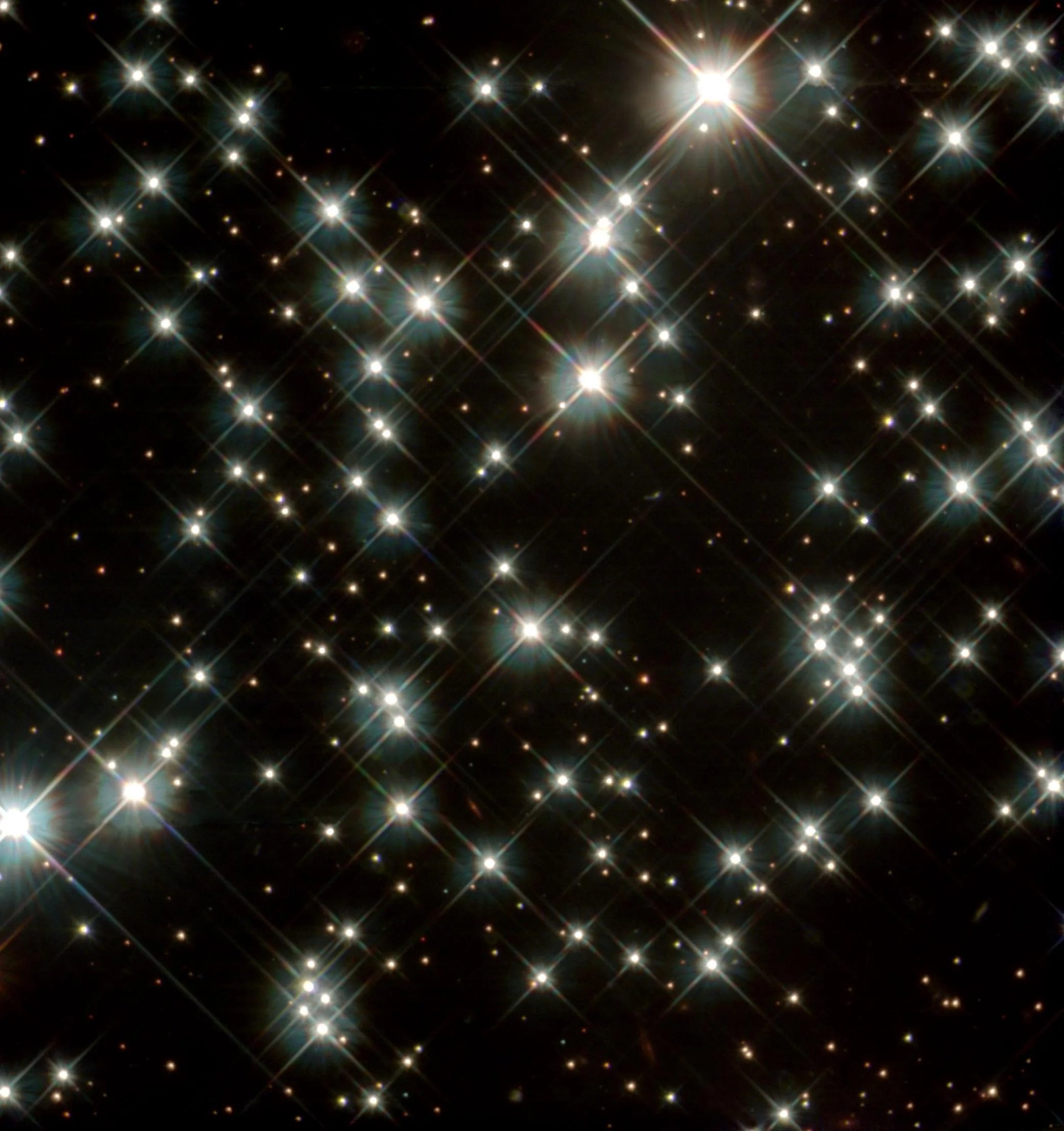
M4 was discovered in 1746 by the Swiss astronomer Jean-Philippe Loys de Chéseaux. Home to more than 100,000 stars, the cluster is predicted to contain up to 40,000 white dwarfs — the cores of ancient, dead stars whose outer layers have drifted away into space. As white dwarfs age, they grow cooler, fainter, and more difficult to detect. Therefore, a globular cluster’s age can be inferred from the age of its faintest white dwarf. Because the stars in these clusters are some of the oldest in the universe, up to 13 billion years old, astronomers are able to use them to estimate the age of the universe.
The white dwarfs in M4 are less than one-billionth the apparent brightness of the faintest stars that can be seen with the naked eye. Even the brightest of the detected white dwarfs are no more luminous than a 100-watt light bulb seen at the Moon’s distance. The faintest are comparable to a 2.5-watt night-light at the same distance.
The ancient orbs comprising M4 were captured by Hubble in both visible and infrared light. The resulting image offers a view into the center of a cluster that is more than twice the age of our solar system.
NASA and B. Preston (STScI and Max-Q Digital)
For more information about Hubble’s observations of M4, see:
Explore Hubble's Messier Catalog
The following pages contain some of Hubble’s best images of Messier objects taken thus far.

Overview The Messier catalog, begun by astronomer Charles Messier in the 18th Century and revised over the years, includes some…

Better known as the Crab Nebula, Charles Messier originally mistook Messier 1 for Halley’s Comet, which inspired him to create…
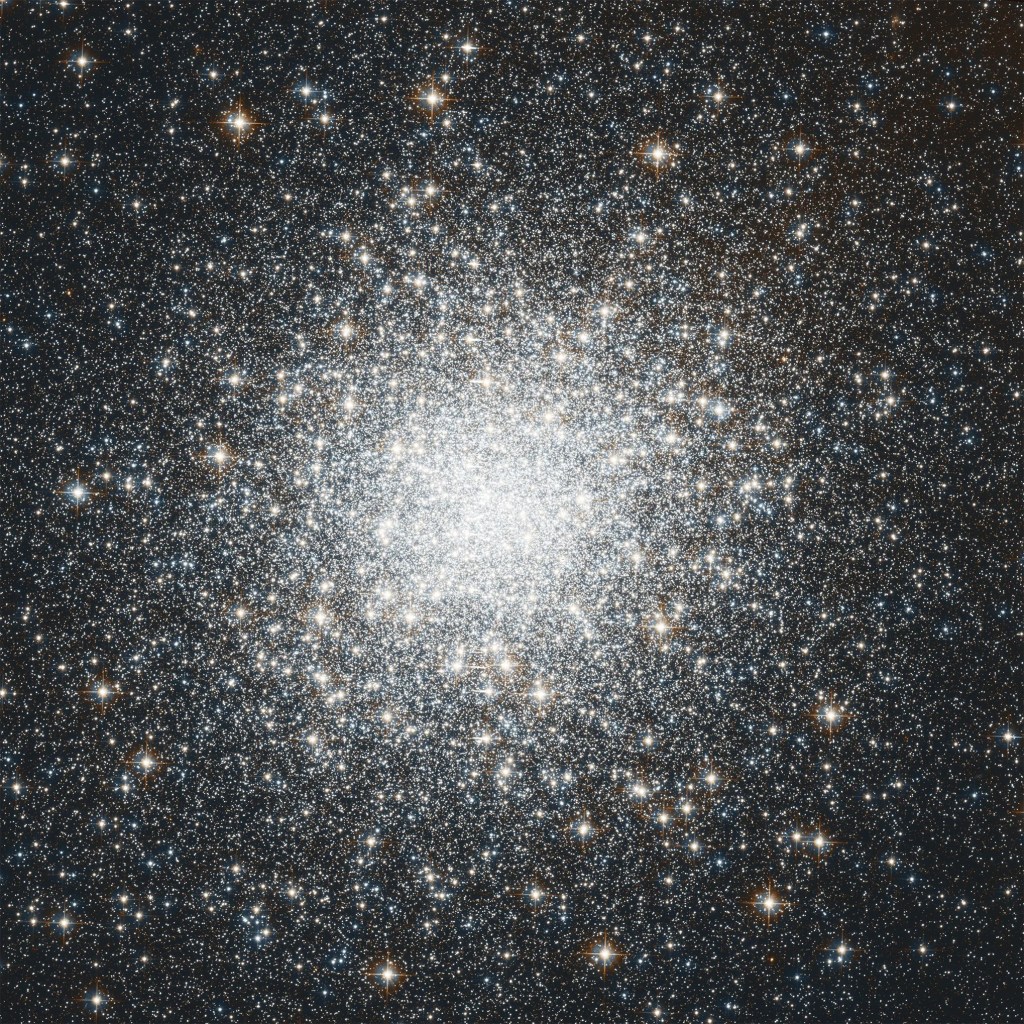
Hubble's image of Messier 2 is comprised of visible and infrared wavelengths of light.




























